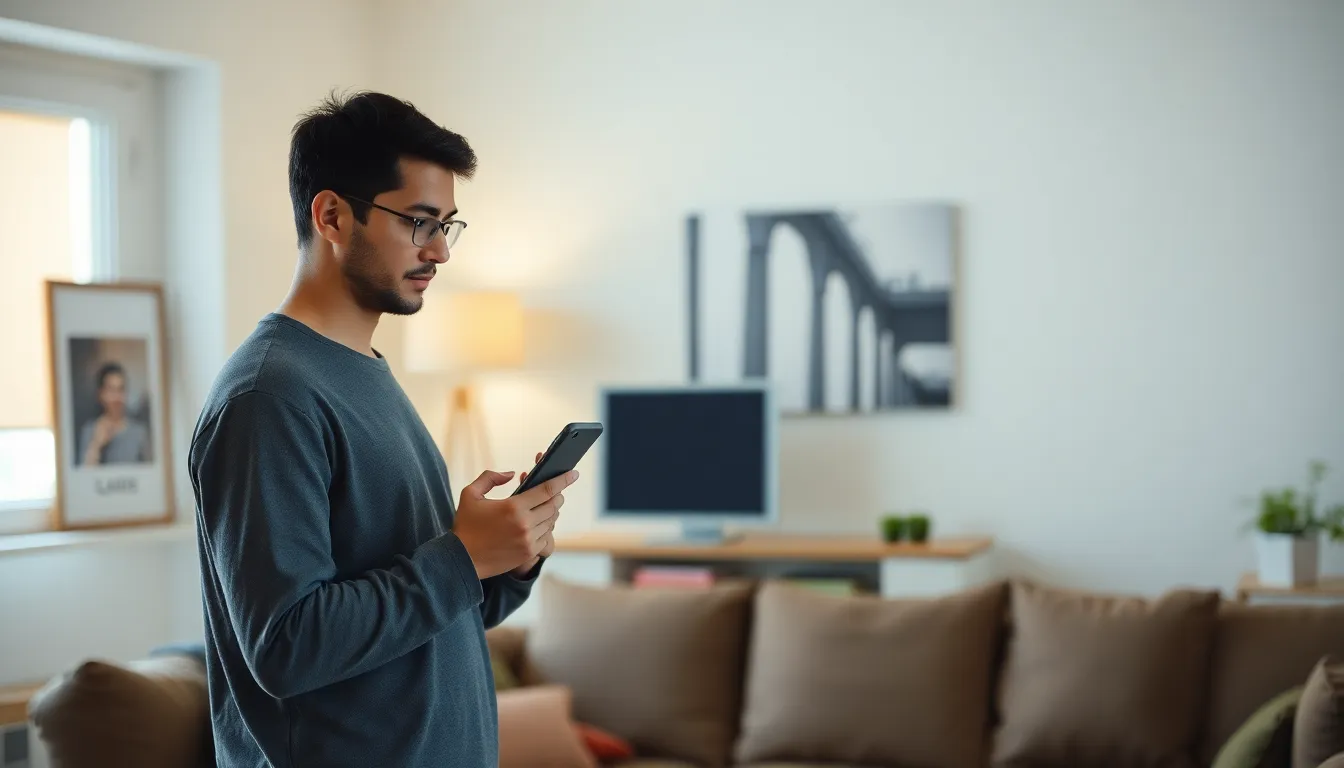Changing your IP address on an iPhone might sound like a techy nightmare, but it’s easier than finding a decent Wi-Fi connection at a coffee shop. Whether you’re looking to boost your online privacy or just want to dodge those pesky geo-restrictions, understanding how to switch your IP can make all the difference.
Table of Contents
ToggleUnderstanding IP Addresses
An IP address serves as a unique identifier for devices on a network. Each IP address consists of a series of numbers separated by periods, such as 192.168.1.1. Networks can rely on IP addresses to facilitate communication between devices.
Different types of IP addresses exist, including public and private addresses. Public IP addresses can be accessed over the internet, enabling external devices to communicate with your network. In contrast, private IP addresses operate within a local network, allowing internal communication among connected devices, such as phones and computers.
Switching or changing an IP address can improve online security. Such changes can mask the user’s actual location, making it harder for websites and services to track their browsing habits. It may also allow access to geo-restricted content. For example, changing to an IP address from a different country can allow users to access region-specific streaming services.
Dynamic IP addresses frequently change, while static IP addresses remain constant. Most internet service providers (ISPs) assign dynamic IP addresses by default. Users can request static IP addresses, particularly if they need a consistent network presence for online services.
Understanding how IP addresses function helps users appreciate the significance of changing them. Enhanced privacy and improved access to information can result from simply modifying an IP address on a device like an iPhone.
Why Change Your IP Address on iPhone

Changing an IP address enhances online experience and security. A unique IP address offers clear benefits in terms of privacy and content access.
Privacy and Security Benefits
Improved privacy arises when an IP address changes. Users can mask their location effectively, making it harder for websites and apps to track their habits. Increased anonymity protects sensitive information during online activities. Additionally, shifting an IP address can prevent targeted advertising based on location data. Online security is more robust, as changing an IP address minimizes the risk of cyber threats. With a dynamic IP address, users face less exposure to hackers targeting fixed addresses.
Bypassing Geo-Restrictions
Access to global content increases with a different IP address. Many streaming platforms impose regional limitations on their content libraries. By changing an IP address, users can access shows, movies, or games unavailable in their region. Furthermore, some websites may block access based on geographic location. Circumventing these barriers opens opportunities for exploring diverse online resources. Users often find it easier to connect to servers in different countries, thus enjoying a broader selection of content without restrictions.
How to Change IP on iPhone
Changing an IP address on an iPhone is straightforward, with several methods available for users to consider. Each option offers distinct steps and advantages.
Using Wi-Fi Settings
To change an IP address through Wi-Fi settings, users need to access the Settings app. They should tap on “Wi-Fi,” then select the connected network. In the network details, users can choose “Configure IP.” Options include “Automatic” and “Manual.” Selecting “Manual” allows users to input a new IP address. After entering the new details, tapping “Save” updates the configuration.
Using a VPN
Using a VPN is an effective way to change an IP address without manually altering settings. First, users must download a reputable VPN app from the App Store. Once installed, they should open the app and sign in. Selecting a server in a desired location allows users to connect. This action masks the real IP address, providing access to restricted content. It’s a seamless method for enhancing online privacy.
Using Cellular Settings
For those using cellular data, changing the IP address involves adjusting settings within cellular configurations. Users start by navigating to Settings and selecting “Cellular.” Tapping on “Cellular Data Options,” they can find “Cellular Network.” Changing the APN settings can lead to a new IP address. After adjusting the APN, they should restart the device for the settings to take effect.
Common Issues and Troubleshooting
Users may encounter various issues while changing their IP address on an iPhone. A frequent problem involves not connecting to the internet after an IP change. This situation often arises when the new IP address conflicts with existing network settings. Restarting both the iPhone and the router frequently resolves this.
Another common issue pertains to VPN connections not functioning correctly. If the VPN fails to establish a secure connection, users should check their internet connection first. Configuring the VPN settings properly can also eliminate many issues associated with VPN usage.
Sometimes, changes might not register if the DHCP lease isn’t renewed. Users can often address this by heading to the Wi-Fi settings, selecting the network, and choosing the option to forget the network. Reconnecting after forgetting the network resets the DHCP lease.
For those utilizing cellular data, an incorrect APN configuration may prevent successful IP changes. Verifying the APN settings according to the carrier’s specifications provides clarity and helps correct the situation.
Device software can cause additional complications. Users should ensure that their iPhones are updated to the latest iOS version. With outdated software, compatibility issues can impair performance, especially once changes are made to network settings.
Finally, connectivity issues may stem from firewalls or parental controls restricting access to certain websites or apps. Checking the settings within both the router and the device may reveal restrictions that need adjustments.
By understanding these potential issues, users can troubleshoot effectively and enhance their online privacy and security without hassle.
Changing an IP address on an iPhone is a straightforward process that offers significant benefits. By enhancing online privacy and security users can enjoy a safer browsing experience while accessing a wider range of content. Whether through Wi-Fi settings or a VPN app users have multiple options to modify their IP address easily.
Understanding potential challenges and troubleshooting tips ensures a smooth transition when changing IP addresses. With the right approach users can navigate the digital landscape more freely and securely. Embracing these methods empowers users to take control of their online presence and enjoy greater flexibility in their internet usage.


